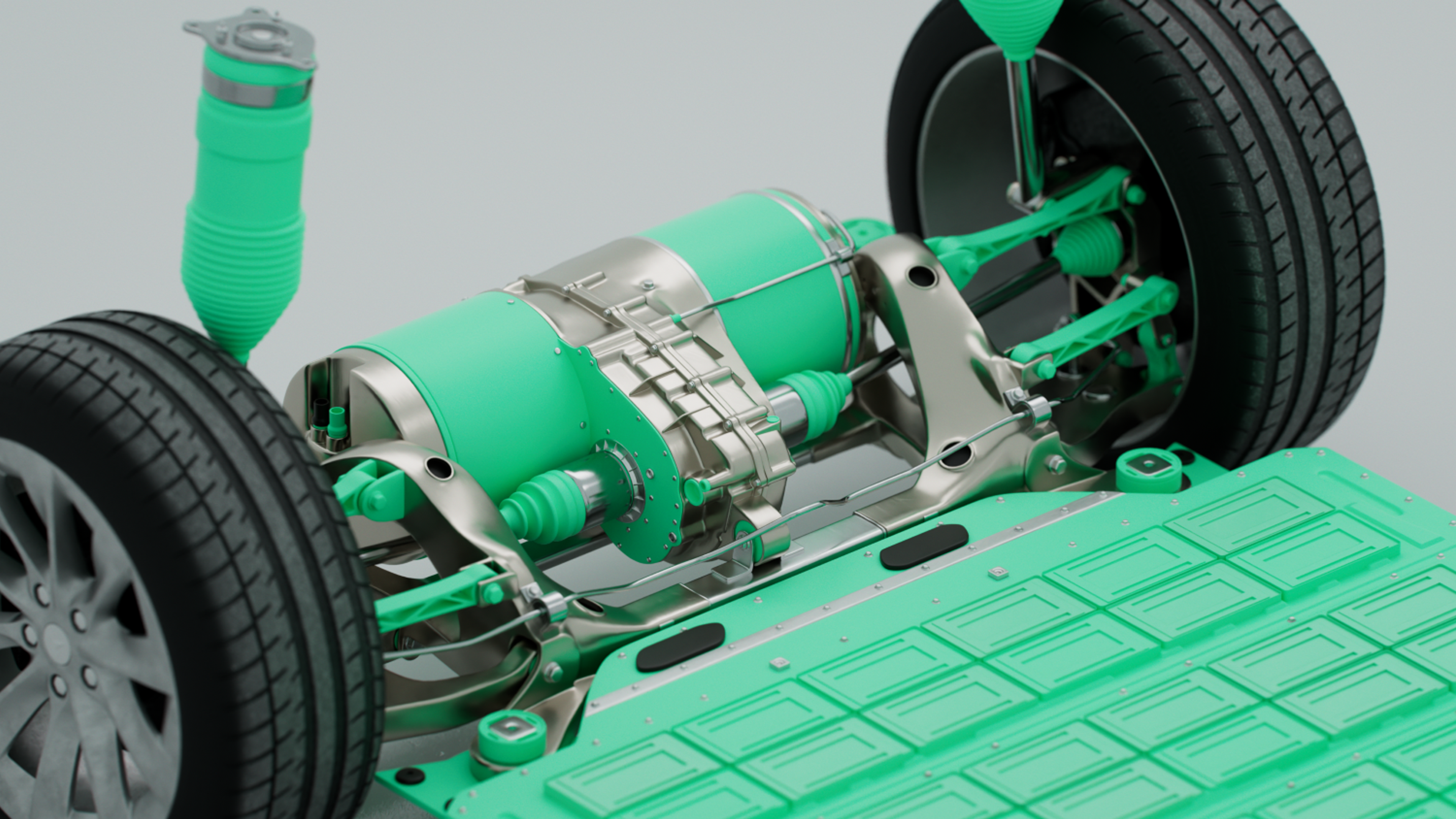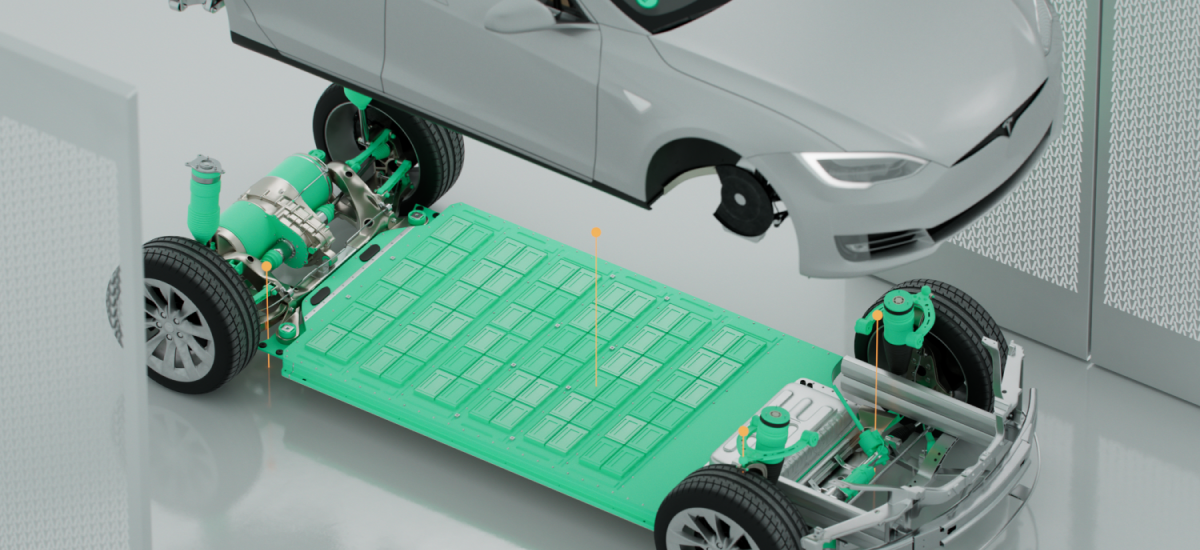What are the different kinds of electric car batteries?
Today, EV batteries are typically comprised of thousands of rechargeable lithium-ion cells, which are connected together to form a battery pack.
Most EVs today use one of two kinds of lithium-ion battery chemistries: lithium-ion nickel-cobalt-aluminum (NCA) or lithium-iron-phosphate (LFP). To date, most Tesla vehicles sold in the U.S. use NCA chemistries, but the company has started to deploy LFP batteries in its Model 3 and some Model Y variants.
NCA Batteries: This chemistry delivers more range due to higher energy density but still remains expensive and has a shorter life cycle (1,000 to 2,000 full recharge cycle counts) than its LFP counterpart. Tesla recommends charging NCA batteries to only 90% in daily use to preserve long-term health.
LFP Batteries: This chemistry has a longer life cycle (capable of more than 3,000 full recharge cycle counts), lower cost and is more environmentally friendly. However, it has a lower energy density (translating to lower range for similar size) and is more sensitive to cold temperatures. Tesla recommends charging LFP batteries to 100% to preserve long-term health.
There is also a third type of lithium-ion battery chemistry that uses nickel-cobalt-manganese (NCM) cells. Tesla has started to trial this in its Model Y Standard Range AWD, made in its Texas Gigafactory. According to ZeCar, this cylindrical cell allows for a five time improvement in energy density, six time increase in power, and 16 per cent increase in driving range. It is also part of the vehicle structure and cheaper to produce.

How long do electric car batteries last?
EV batteries are built to last. In fact, it’s more likely than not that your battery will outlive your car. Generally, EV batteries last at least 12 to 20 years. And for those rare cases where something goes wrong, every EV battery sold in the U.S. comes with at least eight years or 100,000 miles in battery battery warranty.
Are electric car batteries covered by warranty?
Yes. The federal government requires that manufacturers offer an eight-year or 100,000-mile warranty on all EV batteries. California takes this one step further, mandating 10 years or 150,000 miles. If you want to be extra well protected, it's good to look for a warranty that specifies a guaranteed battery capacity. Some manufacturers will cover a battery replacement if the battery falls below a certain capacity, usually 70%, while still under warranty. For more on battery warranty basics, see our EV Warranty Guide.
Are electric car battery warranties transferrable?
Typically, the remaining balance of an EV battery warranty is transferable to any subsequent owner. However, it is important to read any make-and-model-specific fine prints as a full transfer is not always possible. For example, the second owner of a Hyundai or Kia EV will have their battery warranty shortened from the original 10 years or 100,000 miles length.
For buyers of pre-owned Teslas, the remaining balance of the New Vehicle Limited Warranty – including Battery and Drive Unit Limited Warranty – will transfer, as long as the vehicle's ownership is transferred through the Tesla app as well.

How should I take care of my electric car’s battery life?
While an EV battery will experience some degradation and range loss over time, this is typically a very slow process. Additionally, you can follow the below-described best practices to maintain an optimal EV battery health:
1. Regularly Install Over-The-Air (OTA) Updates
This helps you get the latest tweaks to battery management controls and improves battery efficiency, range, charging speeds, and durability.
2. Avoid Frequently Fully Charging or Draining the Battery
The most critical part here is to never let your battery discharge all the way to 0%. This helps to avoid unnecessary strain on the battery and related components. It's good to recognize that even when left unused and unplugged, your EV will periodically use energy to test different systems, to power the onboard electronics, and to recharge the vehicle's low voltage battery. This may cause an EV battery to discharge at a rate of approximately 1% per day.
Depending on your EV model and its battery chemisty, it may be also good to limit your charging to 80-90%. For Tesla LFP batteries, you can charge up to 100% in daily use. For Tesla NCA/NCM batteries, it's recommended to set the maximum charging limit to 90%.
3. Don't Overuse Fast Chargers
While a great convenience when in need of a quick recharge, regular use of DC fast chargers (with 50-350 kW stations) will cause your battery to degrade at a faster rate.
For more on EV maintenance and charging, see our EV Maintenance Guide and EV Charging Guide.
How much does it cost to replace an electric car battery?
First, it's good to note that having to replace your electric car battery is very unlikely. However, in the rare case that there really is need for this, it's good to try and use the EV battery warranty to cover the replacement costs.
Replacement costs vary depending on the EV make, model, and trim. Typically, an EV battery replacement costs between $5,000 and $15,000, which is roughly in line with the costs of having to replace a conventional internal combustion engine.
According to some recent estimates by J.D. Power, Tesla Model 3, Model X, and Model S replacement costs are:
- Model 3: From $13,000
- Model X: From $14,000 upward
- Model S: From $13,000 to $20,000
Are electric car batteries recyclable?
Yes! In fact, a report by the California EPA's Battery Recycling Advisory Group estimates that 95% of the raw materials in an EV batteries can be recycled. Beyond recycling, EV batteries can also be upcycled, reused or repurposed.

How does Ever diagnose EV battery health?
Typically, Ever relies on three different battery diagnostics approaches to ensure sufficient battery health for all electric cars that we buy and sell.
First, Ever runs a remote, statistical estimate of an electric car's battery health, with the help of battery diagnostic service providers. This kind of statistical estimate is typically based on a large data set on similar electric cars' remaining battery health and range – with similar vehicles defined based on the vehicle make, model, year, trim, odometer mileage, age, and location.
Second, Ever takes a look at the electric car's own battery diagnostics, as made available by the vehicle's manufacturer. Different makes and models have varying degrees of OEM battery diagnostics available. For many electric cars, such as the latest Tesla models, the OEM battery diagnostics are relatively trustworthy. That being said, a manufacturer's diagnostic is always somewhat biased, and it's good to complete high-accuracy third-party testing.
Lastly, and perhaps most importantly, Ever runs a physical battery diagnostic. In a physical battery diagnostic, we connect to the car's OBD port, reading and testing for several parameters, including the car's battery history, battery controller performance, high-voltage battery state, low-voltage battery state, and vehicle communications & signal systems.
Data on battery history covers the car's charging cycles, state-of-charge and depth-of-discharge histograms, equalization times, average energy consumption, estimated battery management system health, and more. Testing for battery controller performance refers to ensuring the car's temperature and cell voltage sensors are functional and the estimated state-of-charge and state-of-health are plausible.
Diagnosing high-voltage and low-voltage battery systems refers to testing for battery current, voltage, cell voltage deviations, and cell temperature deviations. Diagnosing vehicle communications & signal systems refers to confirming that all relevant signals are available, plausible, sampled at the right rate, and high-qualilty enough.
